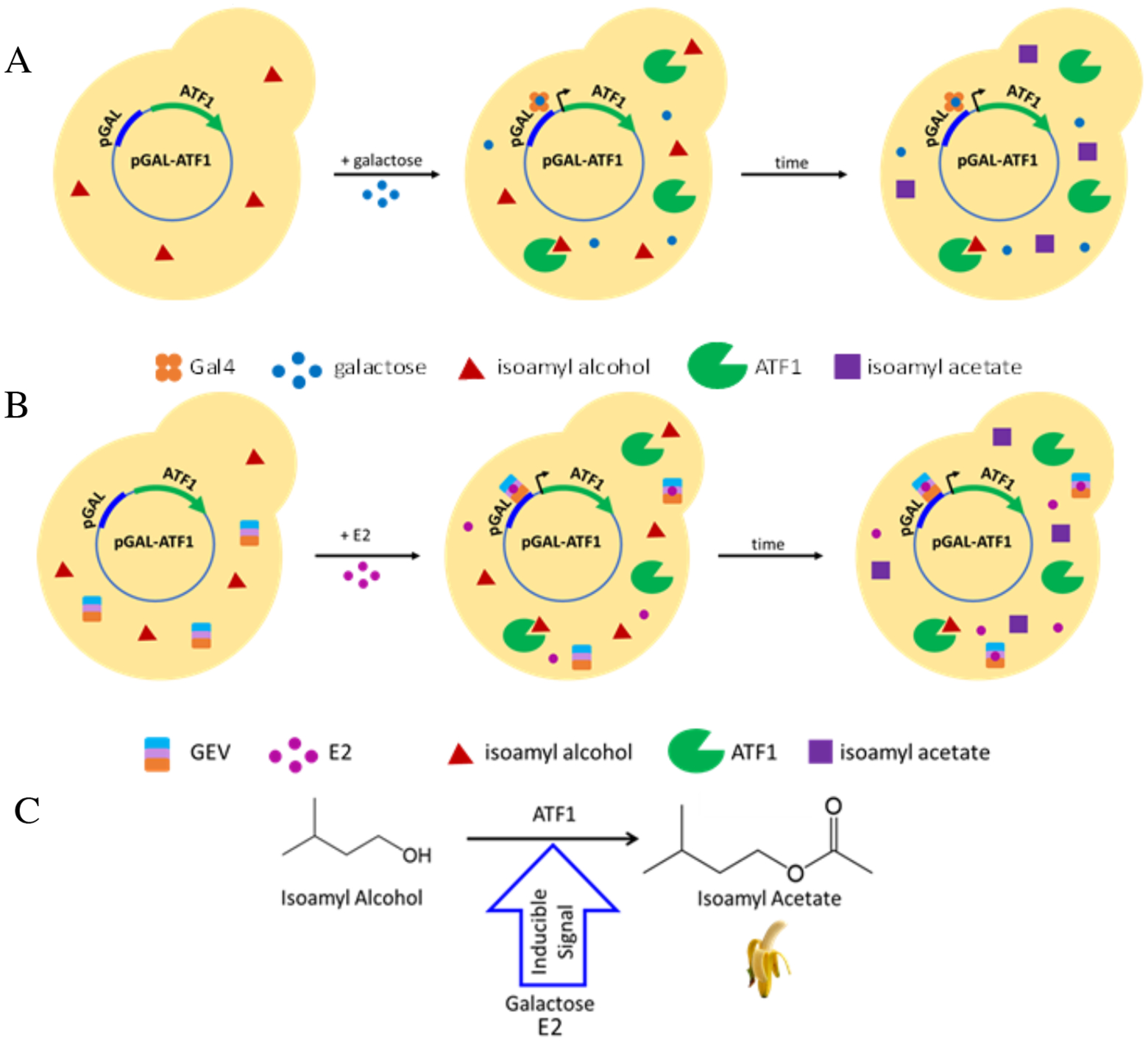Figure 1.

Scentsor Design. (a) Galactose scentsor made using the galactose-inducible plasmid, pATF1. When scentsor yeast are treated with galactose (in the absence of glucose), galactose binds to the endogenous Gal4 transcription factor and induces yeast to over-produce the enzyme ATF1 (note that endogenous ATF1 is present at low levels). ATF1 converts isoamyl alcohol (which yeast naturally produce) to isoamyl acetate (banana scent). (b) Estrogen scentsor made using the chimeric GEV receptor that binds to the galactose promoter and is induced by treatment with E2. (c) Schematic of the conversion of isoamyl alcohol to isoamyl acetate.
